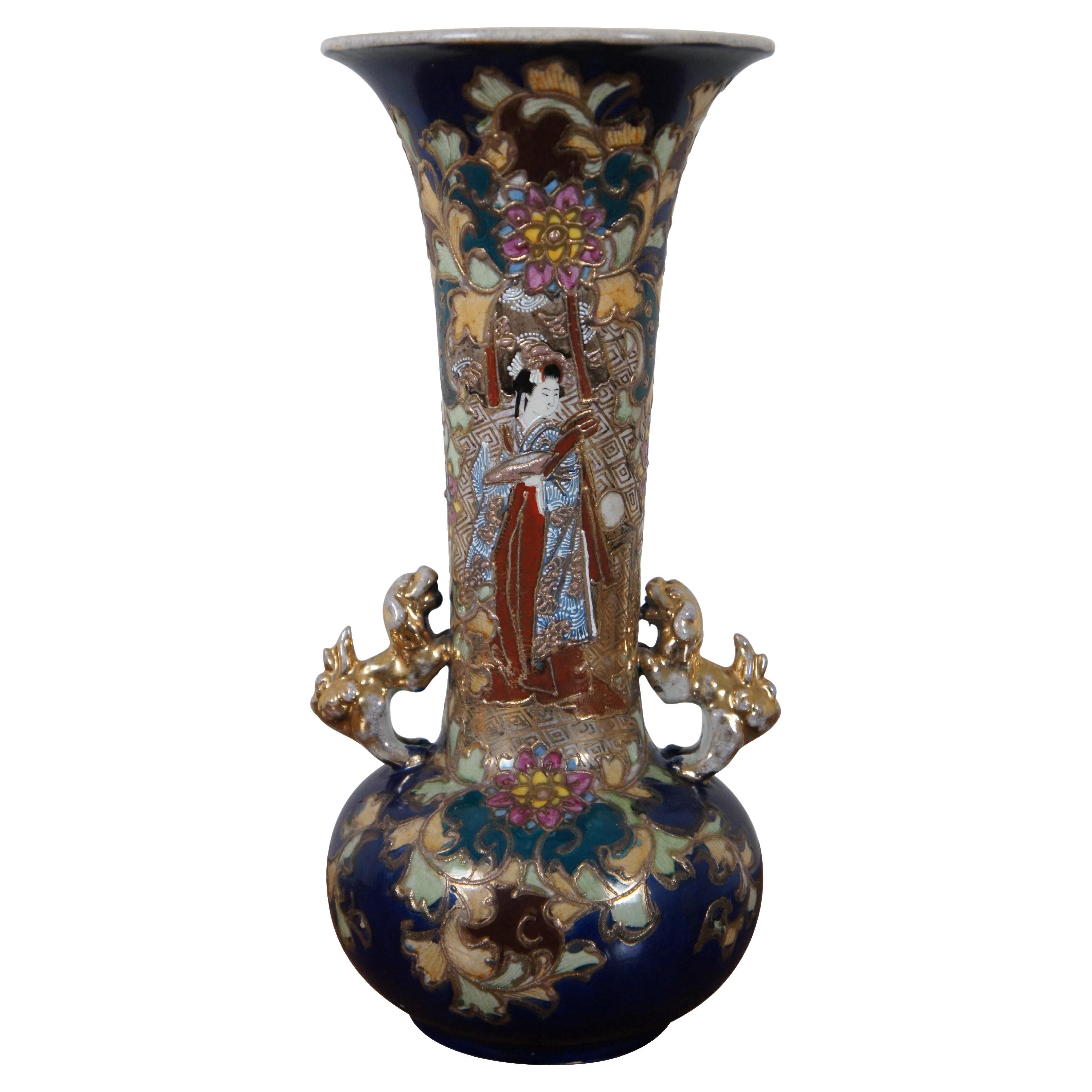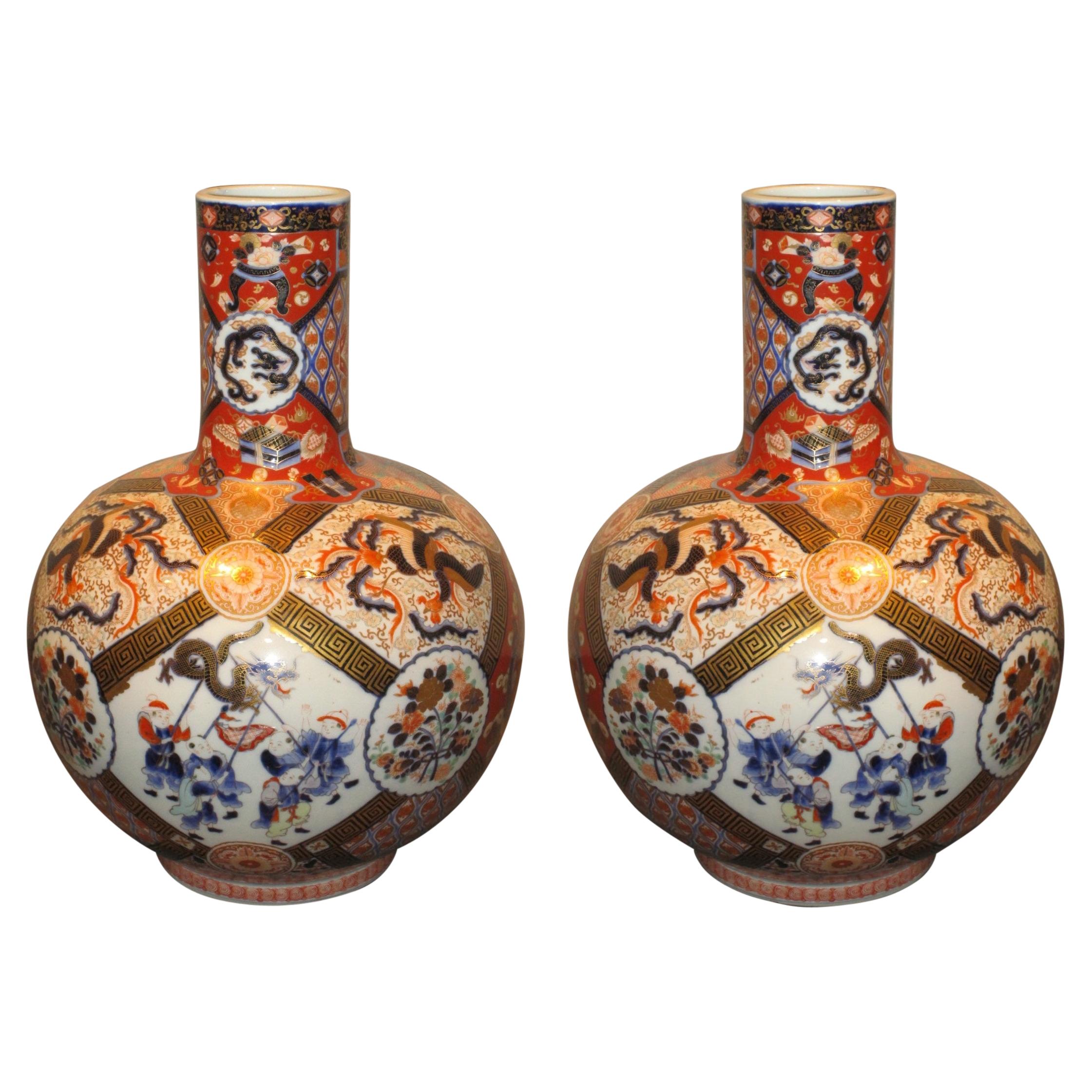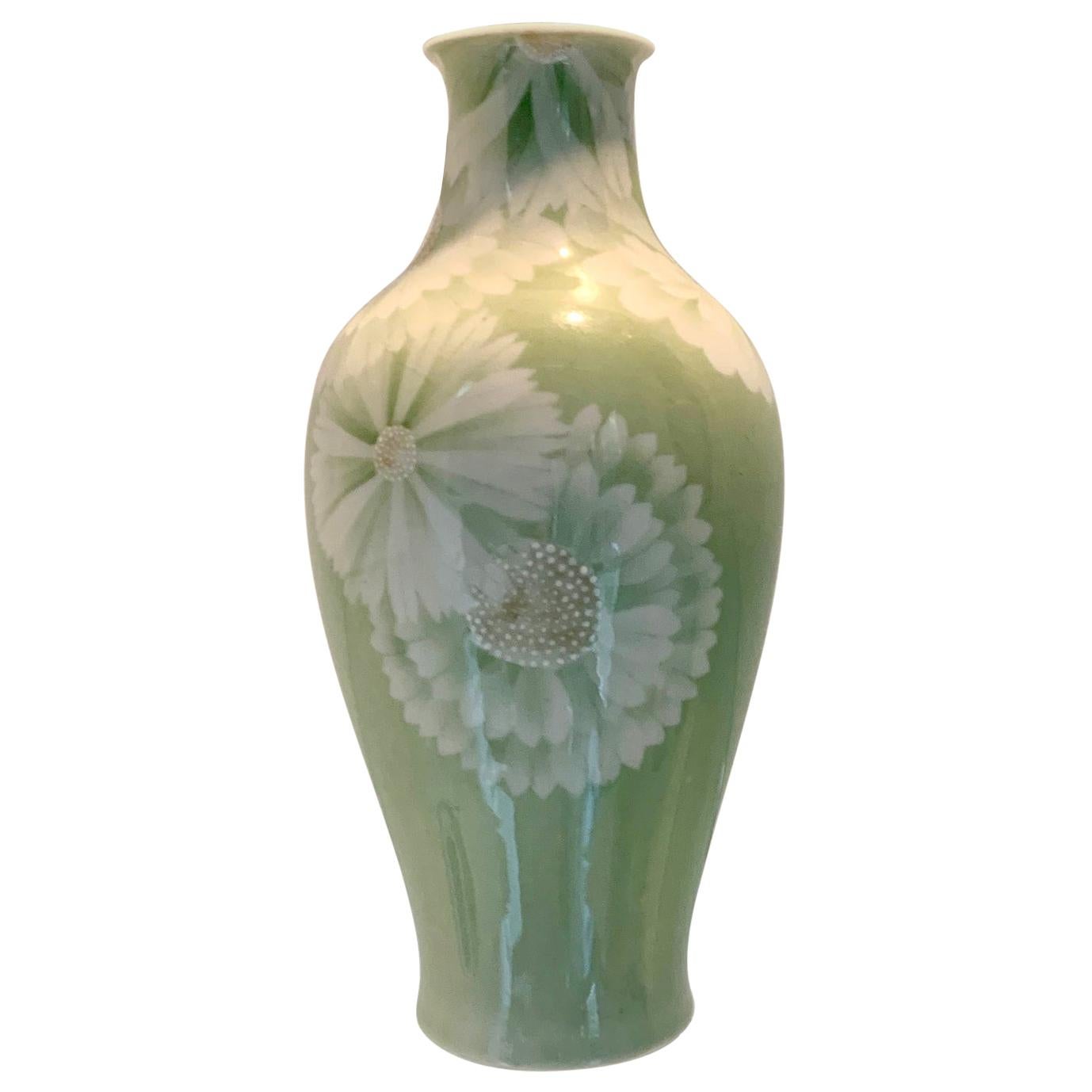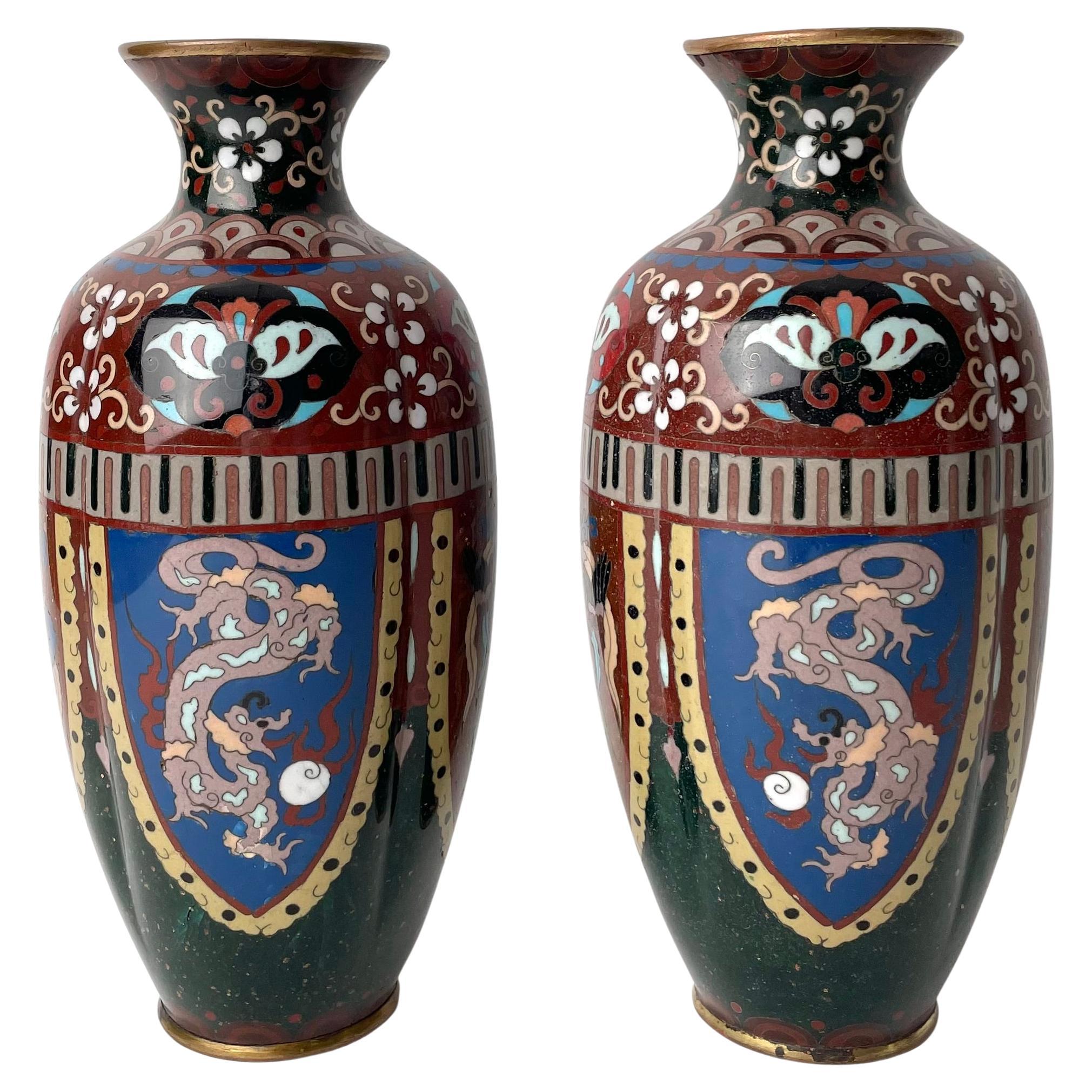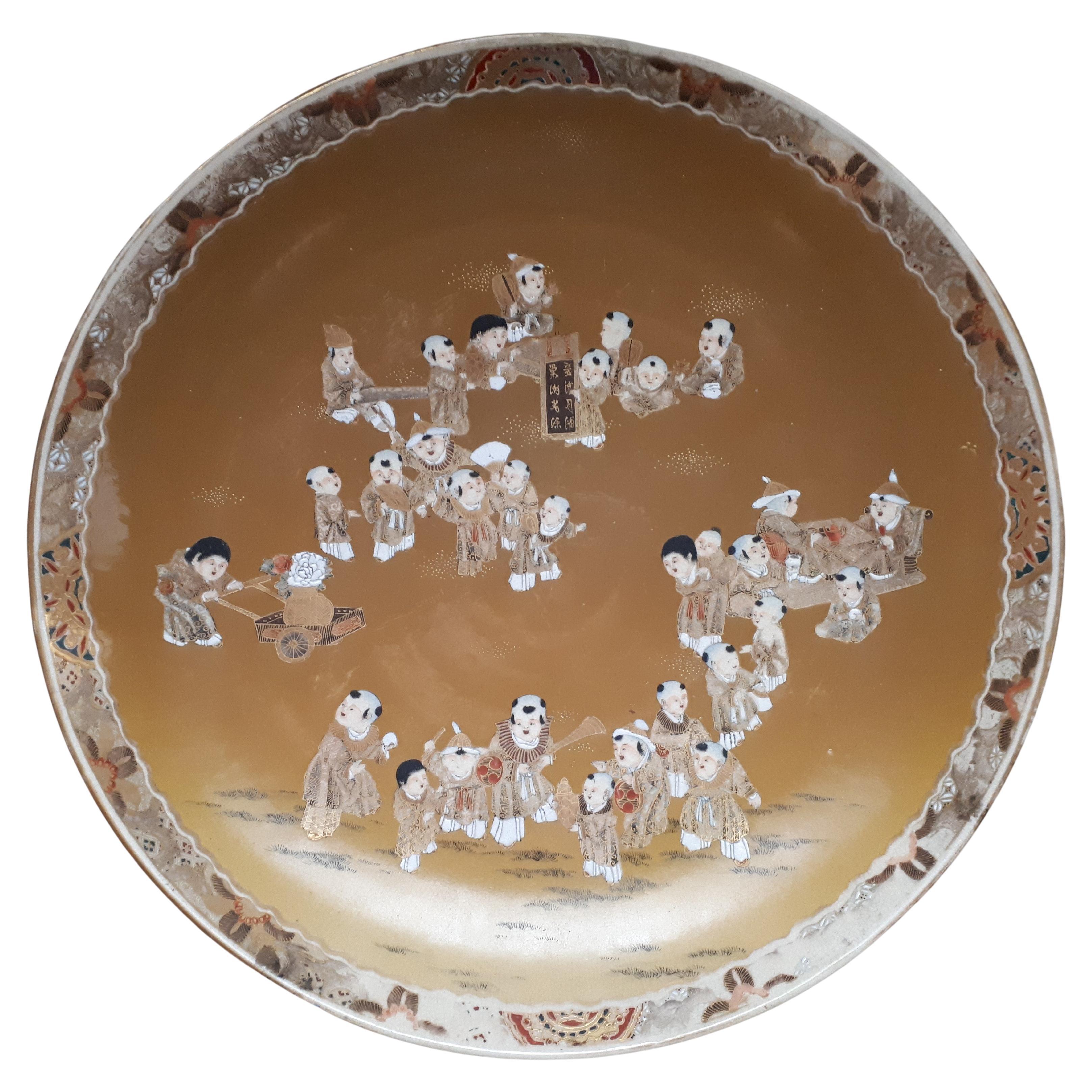Items Similar to Pair Of Seto Porcelain Covered Vases, Japan Meiji Era
Want more images or videos?
Request additional images or videos from the seller
1 of 14
Pair Of Seto Porcelain Covered Vases, Japan Meiji Era
About the Item
Magnificent pair of porcelain vases with a rich underglaze blue decoration of a couple of partridges among the vegetation. A minimal defect on each interior lid in the shape of a stylized lotus flower (a tiny hair on one, a small piece glued on the other) otherwise perfect condition. Both vases are signed under the base. Japan, second half of the 19th century.
- Dimensions:Height: 14.57 in (37 cm)Diameter: 9.85 in (25 cm)
- Sold As:Set of 2
- Style:Meiji (Of the Period)
- Materials and Techniques:Porcelain,Enameled
- Place of Origin:
- Period:
- Date of Manufacture:1868 - 1912
- Condition:Repaired: A piece of one interior lid reglued.
- Seller Location:Saverne, FR
- Reference Number:1stDibs: LU8536236470002
About the Seller
5.0
Vetted Seller
These experienced sellers undergo a comprehensive evaluation by our team of in-house experts.
1stDibs seller since 2023
6 sales on 1stDibs
Typical response time: 5 hours
- ShippingRetrieving quote...Ships From: Saverne, France
- Return PolicyThis item cannot be returned.
More From This SellerView All
- Large Japanese Arita (Imari) Porcelain Dish, Japan Meiji EraLocated in Saverne, Grand EstLarge Arita porcelain dish, with polychrome decoration and gilt highlights of standards placed under a maple tree. Japan, late 19th century.Category
Antique Late 19th Century Japanese Ceramics
MaterialsPorcelain
- Large Japanese Satsuma Earthenware Dish, Meiji Era JapanLocated in Saverne, Grand EstLarge Satsuma earthenware dish decorated with "one hundred boys". Signed on the reverse. Japan around 1900Category
Early 20th Century Japanese Meiji Ceramics
MaterialsEarthenware
- Japanese Satsuma Earthenware Dish, Meiji Era JapanLocated in Saverne, Grand EstExceptional Satsuma earthenware dish of incredible finesse. A work of art which, without a doubt, required several dozen hours of meticulous work. But what a result !!! Japan around ...Category
Early 20th Century Japanese Ceramics
MaterialsEarthenware
- Pair of Large Japanese Arita 'Imari' Porcelain Vases, Japan NineteenthLocated in Saverne, Grand EstExtraordinary pair of Arita porcelain vases with blue, coral and polychrome decoration, with gold highlights, of court scenes and floral landscapes. A restored cover and a chip on a ...Category
Antique Late 19th Century Japanese Ceramics
MaterialsPorcelain
- Japanese Kutani Porcelain Vase, Japan NineteenthLocated in Saverne, Grand EstLarge Kutani porcelain vase with polychrome decoration with gilt highlights, of shishes in reserves on a foliage background. Japan, second half of the 19th century.Category
Antique 19th Century Japanese Ceramics
MaterialsPorcelain
- Japanese Arita Porcelain Vase with Imari Decoration, Japan Edo PeriodLocated in Saverne, Grand EstImportant vase with gadrooned body in Arita porcelain with blue, coral and gold decoration of flowers in reserves on a background of lattices and foliage. Japan, 18th century.Category
Antique 18th Century Japanese Ceramics
MaterialsPorcelain
You May Also Like
- Antique Japanese Meiji Era Porcelain Satsuma Figural Kutani Vase Fu Dogs GeishaLocated in Dayton, OH"Late Meiji era Kutani vase, circa 1903. A beautiful porcelain blue ground centered by an intricate Geisha flanked by gold figural Foo Dog handles. Features a floral and foliat motif throughout. Signed along the base. Kutani ware, Japanese porcelain made in Kaga province (now in Ishikawa prefecture). The name “Old Kutani” refers to porcelain decorated with heavily applied overglaze enamels and produced in the Kaga mountain village of Kutani. The powerful Maeda family had established a kiln there by 1656. The clay bodies used were gray and coarse-grained. On most pieces—dishes and bowls were especially common—a white or blue-white matte glaze was decorated in dark, restrained colours, initially greens, yellows, and some reds, and later purples and dark blues. Some items had cobalt blue decoration under a white glaze. The most noted Old Kutani pieces are “Green Kutani,” in which most of the surface is covered in a green or blue-green glaze to which one or two colours have been added (or the glaze is applied evenly over a design executed in black). The bold designs of Kutani ware drew freely from Chinese ceramics, paintings, and textiles. They are renowned for their rich pictorial ornament executed in lively, intense lines. Owing to local financial problems and difficulties in obtaining the necessary pigments, the Kutani kiln was abandoned some time in the Genroku period (1688–1704). Ceramics production in Kaga enjoyed a renaissance early in the 19th century, however, including the establishment of another kiln at Kutani in the 1820s. In addition to a revival of the styles of Old Kutani ware, there arose a style using gold on a coral-red ground, which was perfected during another spate of activity that began in the 1860s. Technical advances were made and Western-style pigments were adopted, and by the 1890s modern Kutani...Category
Antique Early 1900s Meiji Vases
MaterialsPorcelain
- Pair of Japanese Late Meiji Period Fukagawa Porcelain Vases, circa 1900Located in Takarazuka, JPSuperb pair of Japanese large Meiji period Fukagawa signed porcelain vases (circa 1900). Intricately hand-painted in cobalt blue underglaze with polychrome and gold overglaze on a st...Category
Antique Early 1900s Japanese Meiji Vases
MaterialsGold
- Japanese Porcelain Vase Meiji Period Makuzu KozanBy Makuzu KozanLocated in Atlanta, GAA finely decorated and glazed Japanese porcelain vase by Makuzu Kozan (1842-1916) circa 1900s Meiji Period. The vase is of a classic bottle form with baluster body and short neck. It was decorated with underglaze white magnolia blossom on a pleasant celadon background. The stamens of the flower were artistically rendered in a low relief, giving the design a realistic appeal with the dimension. Miyagawa Kozan...Category
Early 20th Century Japanese Meiji Ceramics
MaterialsPorcelain
- Set of Two Japanese Cloissoné Vases Meiji Era Dragon and PheonixLocated in Knivsta, SEA pair of Japanese cloisonné enamel vases. Meiji era Japan (1867-1912), a period marked by rapid transformation of Japanese traditional society into a global power. The period of gro...Category
Antique Late 19th Century Japanese Meiji Ceramics
MaterialsEnamel
- Japanese Meiji Porcelain Water Bucket Vase, circa 1880Located in Takarazuka, JPJapanese porcelain water bucket vase or teoke from early Meiji era, circa 1880, exhibiting beautiful hand-painting in underglaze cobalt blue and polychrome...Category
Antique Late 19th Century Japanese Meiji Vases
MaterialsGold
- Kutani Japanese Meiji Porcelain Vase Painted with FiguresLocated in Bishop's Stortford, HertfordshireJapanese Meiji porcelain Kutani vase hand painted with decorative and a figural panel dating between 1868 and 1912. The elegantly shaped tall ...Category
Antique 19th Century Japanese Meiji Ceramics
MaterialsPorcelain
Recently Viewed
View AllMore Ways To Browse
Asian Garden Glazed Pottery
H F P Macau
Asian Blue White
Arita Blue And White Porcelain
Antique Chinese Rice Pot
Asian Foot Bath
Banko Teapot
Chinese Fighting Dog
Monumental Satsuma Vase
Antique Chinese Cleaver
Gadsden Flag
Shochu Bottle
Song Dynasty Funerary
Taizo Kuroda
Vietnamese Kendi
Vintage Chinese Cracked Celadon
Meiji Satsuma Jar
Satsuma Koro
